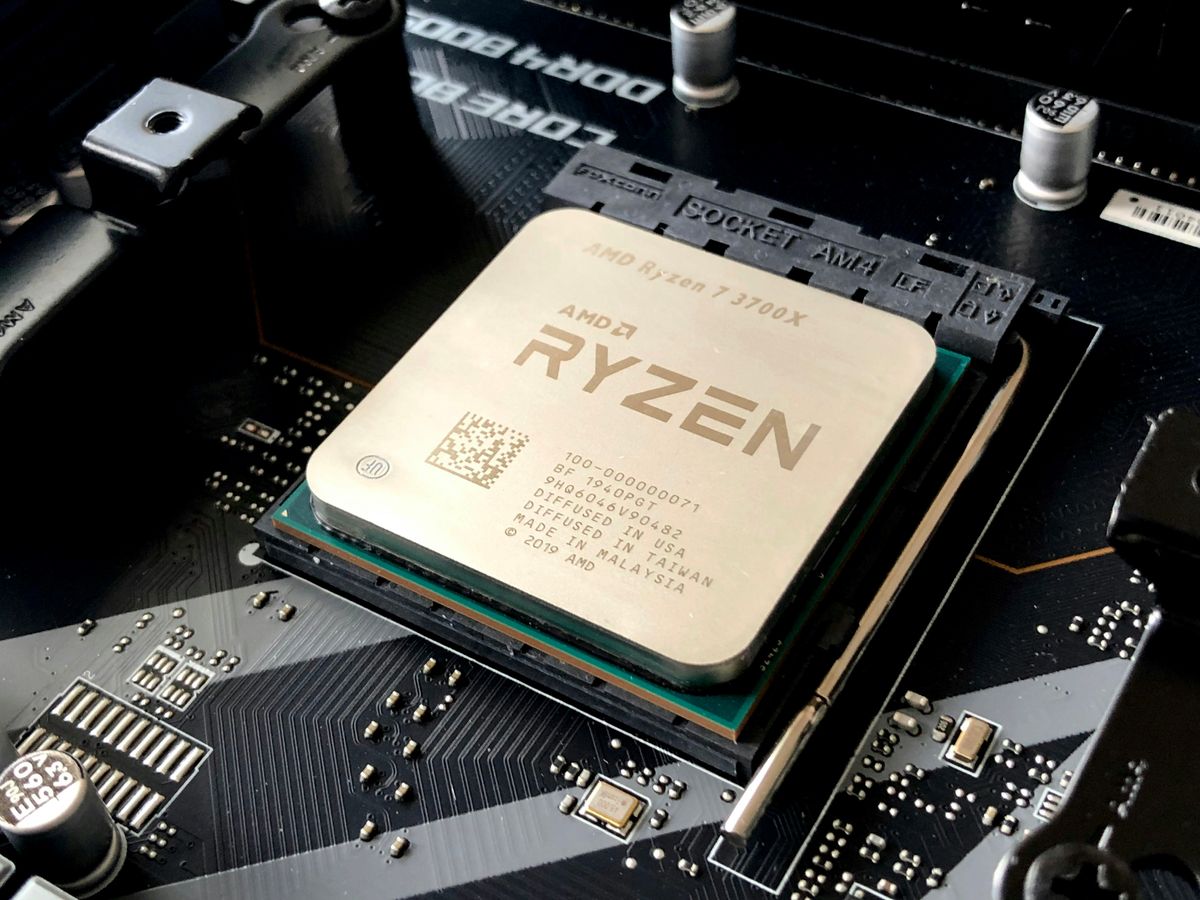The trade of electronics between the USA and Saudi Arabia is a significant economic activity, but it faces challenges, one of which is non-payment issues. These issues not only strain business relationships but also impact financial stability and international trade dynamics. To address non-payment effectively, a structured and phased approach is critical. This article explores a three-phase Recovery System designed to recover funds from non-paying parties in the USA-Saudi electronics trade, detailing the steps involved in each phase and the associated fee structure for recovery services.
Key Takeaways
- A three-phase Recovery System is employed to address non-payment issues, with each phase escalating efforts from initial recovery to possible litigation.
- Phase One involves immediate actions within 24 hours, including sending demand letters, skip-tracing, and persistent contact attempts for 30 to 60 days.
- If Phase One fails, Phase Two escalates to legal intervention with local attorneys, who continue communication and assess further action recommendations.
- Phase Three involves a decision on litigation, with a thorough investigation into the viability of asset recovery and understanding the costs involved.
- The fee structure for recovery services is competitive and varies based on claim characteristics, with different rates for accounts of varying ages and amounts.
Understanding the Non-Payment Issue in USA-Saudi Electronics Trade
The Impact of Non-Payment on Trade Relations
When payments stall, trust erodes. We witness a ripple effect across the electronics trade between the USA and Saudi Arabia. Businesses suffer, partnerships fray, and the market destabilizes.
- Non-payment leads to strained relationships and potential loss of future contracts.
- Cash flow disruptions impact operational capabilities.
- Creditworthiness of entities comes into question, affecting future financing.
The vitality of trade hinges on the reliability of payment. Non-payment is not merely a transactional hiccup; it’s a breach that can undermine years of built trust.
Our collective experience shows that addressing non-payment promptly is crucial for maintaining healthy trade dynamics. The consequences of inaction are far-reaching and can jeopardize the very fabric of international commerce.
Common Causes for Non-Payment Scenarios
In our experience, non-payment issues often stem from a few recurring themes. Communication breakdowns are a prime culprit, where misunderstandings or lack of clarity in agreements lead to disputes. Financial difficulties on the part of the buyer, such as cash flow problems or bankruptcy, can also halt payments. Sometimes, it’s a matter of fraudulent activities or deliberate avoidance of payment obligations.
- Miscommunication or contractual ambiguities
- Buyer’s financial insolvency
- Fraudulent practices by the buyer
- Political or economic instability affecting the buyer’s ability to pay
- Legal or regulatory changes impacting trade agreements
We must address these issues proactively to mitigate risks and maintain healthy trade relations. Identifying the root cause is the first step towards resolution.
Legal Framework Governing International Trade Payments
We navigate a complex web of legalities to ensure payments flow smoothly in USA-Saudi electronics trade. International laws and agreements set the stage, but local regulations can complicate the picture. We’re adept at leveraging contracts to enforce payment terms, especially in sectors like renewable energy and industrial machinery.
- Understanding international trade law
- Adapting to Saudi legal requirements
- Enforcing contracts and payment terms
Our strategic approach is crucial for managing non-payment and ensuring a comprehensive recovery system is in place.
When disputes arise, we’re prepared with litigation recommendations, but our goal is always to resolve issues before they escalate. It’s about protecting relationships and investments, ensuring that trade remains a two-way street of benefit.
Phase One: Initial Recovery Efforts
Immediate Actions Taken Within 24 Hours
Within the first 24 hours, we spring into action. Our rapid response is critical to the success of recovery efforts. We initiate with a series of steps designed to engage the debtor and assert the seriousness of their situation.
- The dispatch of the first of four letters via US Mail sets the tone for our intent to recover funds.
- Concurrently, we conduct skip-tracing and investigative measures to unearth the most current financial and contact information.
- Our collectors are relentless, employing phone calls, emails, text messages, faxes, and more to establish communication.
We understand the urgency and do not waste a moment. Daily attempts to contact the debtor are made, persisting for 30 to 60 days. If these efforts do not yield a resolution, we proceed to Phase Two, involving legal expertise.
Addressing delinquent accounts and enforcing payment terms is not just about recovery; it’s about maintaining financial stability and fair business practices in USA-Saudi trade and renewable energy projects.
Skip-Tracing and Investigative Measures
We dive deep, leaving no stone unturned. Our team employs skip-tracing to pinpoint debtor locations and assets. Immediate, thorough investigations kick off the moment we’re on the case. Here’s what we do:
- Utilize advanced databases for up-to-date financial profiles.
- Analyze debtor’s digital footprint for potential leads.
- Engage with industry contacts to gather intelligence.
We’re relentless in our pursuit. Our goal: to arm ourselves with actionable data, ensuring we’re steps ahead in the recovery process.
Once we’ve gathered the intel, we strategize. Each case is unique, and our approach is tailored. We’re prepared to pivot as new information surfaces, always aiming for the swiftest resolution.
Persistent Contact Attempts by Collectors
We don’t let up. Persistence is key in recovering debts. Our collectors engage in relentless contact attempts, ensuring debtors are reminded of their obligations. Daily calls, emails, and messages form our arsenal of communication.
- Day 1: Initial contact attempt via phone and email.
- Days 2-30: Daily follow-ups, escalating in urgency.
- Days 31-60: Intensified efforts with additional communication channels.
We maintain a consistent pressure, adapting our strategies to elicit a response. Our goal is to secure a resolution before escalating to legal action.
Phase Two: Escalation to Legal Intervention
Engagement of Local Attorneys
Once we’ve exhausted initial recovery efforts, we engage local attorneys to bring legal weight to our demands. Our affiliated attorneys are swift to act, drafting demand letters on law firm letterhead to signal serious intent. Communication is key; our attorneys don’t just send letters, they actively pursue dialogue with debtors.
- Immediate drafting of legal demand letters
- Persistent attempts to establish contact
- Utilization of local legal knowledge and presence
We leverage local expertise to navigate the complexities of international trade law, ensuring every action is legally sound and strategically targeted.
Our approach is clear-cut: if the debtor remains unresponsive, we recommend either closing the case or proceeding to litigation. The choice is yours, with no hidden fees or obligations. Our transparent fee structure ensures you’re informed every step of the way.
Legal Demand Letters and Continued Communication
Once we escalate to legal intervention, the tone shifts. Our affiliated attorneys draft demand letters that carry the weight of potential legal action. These letters serve as a formal request for payment, clearly stating the consequences of continued non-payment.
We maintain a persistent dialogue with the debtor, combining the legal pressure with continuous communication efforts. This dual approach is designed to underscore the seriousness of the situation and to encourage a swift resolution.
We’re committed to a three-phase approach to recovering delinquent accounts, ensuring every step is taken to secure payment.
Our experience shows that this method can often lead to payment without the need for further legal action. However, if this step does not yield results, we are prepared to advise on the next strategic move.
Assessment and Recommendations for Further Action
After exhaustive investigation and analysis, we reach a critical juncture. Our recommendations hinge on the debtor’s asset viability and the likelihood of recovery. If prospects seem dim, we advise case closure, sparing you further expense. Conversely, should litigation appear promising, a decision looms.
- If opting out of legal action, you may terminate the claim at no cost, or permit ongoing collection efforts.
- Choosing litigation incurs upfront costs, typically $600-$700, based on jurisdiction. These cover court and filing fees, initiating the lawsuit for full debt recovery.
Our commitment is clear: if litigation doesn’t yield results, you owe us nothing. This assurance underscores our confidence and dedication to your case.
Costs and outcomes vary, but our transparent fee structure ensures you’re informed every step of the way. We tailor our rates to claim characteristics, ensuring competitive pricing for our relentless pursuit of what’s owed to you.
Phase Three: Deciding on Litigation
Evaluating the Viability of Asset Recovery
When we consider asset recovery, we’re faced with a critical decision point. We must assess the debtor’s assets and the surrounding facts of the case to determine if recovery is feasible. If the likelihood of recovery is low, we advise closing the case, at no cost to you.
Should litigation seem a viable path, you’re at a crossroads. Opting out means no further legal fees, with the option to continue standard collection efforts. Choosing litigation requires covering upfront costs, typically $600-$700, based on the debtor’s location. These costs pave the way for legal action to reclaim the full debt, including filing expenses.
Recovery systems are crucial in this phase. They guide our litigation recommendations and ensure we pursue the most effective debt resolution strategies, especially in complex USA-Saudi trade scenarios. Our approach is tailored to the unique challenges of enforcing payment terms in these markets.
We stand by our commitment to a transparent fee structure, only proceeding with your explicit decision to litigate or withdraw.
Understanding the Costs and Process of Legal Action
Embarking on litigation is a significant decision. We must weigh the potential recovery against the upfront costs. Initial legal fees can range from $600 to $700, covering court costs and filing fees. These are necessary to launch the lawsuit and pursue the debtors for all monies owed.
Our approach is systematic, with a clear breakdown of the litigation process and timeline. We’ll guide you through each phase, ensuring you’re informed at every step.
The decision to litigate is pivotal. We stand by to navigate you through the complexities, with transparency at the forefront.
Remember, if litigation does not result in recovery, you owe us nothing. This no-recovery, no-fee structure is designed to align our interests with yours, minimizing your financial risk.
- Initial Consultation and Case Assessment
- Upfront Payment of Legal Costs
- Filing of Lawsuit
- Litigation and Attempted Recovery
- Case Closure if Unsuccessful
Outcomes and Implications of Unsuccessful Litigation
When we reach the crossroads of litigation, the stakes are high. We must weigh the potential for asset recovery against the costs of legal action. If the decision is to proceed, we’re committed to the pursuit, with upfront legal costs signaling our resolve. These costs, typically ranging from $600 to $700, are the price of entry into the legal arena.
However, not all battles are won. Should our efforts not yield the desired results, the path forward is clear. We close the case, and you owe us nothing—no hidden fees, no lingering obligations. It’s a clean break, allowing us to part ways with financial clarity.
Our commitment to transparency extends to our fee structure. Whether successful or not, our integrity remains intact. We stand by our promise: no recovery, no payment.
In the event of unsuccessful litigation, we must consider the implications. The debt remains uncollected, and the resources invested do not bear fruit. Yet, this outcome does not define our partnership. We learn, we adapt, and we prepare for future challenges with enhanced strategies and insights.
Fee Structure for Recovery Services
Competitive Collection Rates Explained
We understand that the cost of recovery is a critical factor for our clients. Our rates are tailored to be competitive and fair, reflecting the complexity and age of the claims. Collection rates in the recovery system are determined by the number of claims submitted, account age, and attorney involvement. Here’s a quick breakdown:
- For 1-9 claims, rates vary from 30% to 50% of the amount collected.
- For 10 or more claims, rates decrease, ranging from 27% to 50%.
The goal is to maximize your recovery while minimizing your expenses.
Remember, if litigation is recommended and you decide to proceed, upfront legal costs will apply. However, if we don’t succeed in recovering your funds, you owe us nothing. It’s that straightforward.
Rate Variations Based on Claim Characteristics
Our fee structure isn’t one-size-fits-all. Claim characteristics significantly influence collection rates. Factors such as the age of the account, the amount owed, and whether the claim requires legal action all play a role in determining the final rate.
- Accounts under one year old typically incur a lower rate due to higher recovery chances.
- Older accounts, over a year, see increased rates reflecting the added difficulty in collection.
- Smaller debts, especially those under $1000, demand a higher percentage due to the disproportionate effort required.
We strive for transparency in our fee structure, ensuring you understand the cost implications from the outset.
Volume discounts are available, rewarding clients who submit multiple claims within a short period. Here’s a quick breakdown:
| Claims Submitted | Accounts < 1 Year | Accounts > 1 Year | Accounts < $1000 | Attorney Involved |
|---|---|---|---|---|
| 1-9 | 30% | 40% | 50% | 50% |
| 10+ | 27% | 35% | 40% | 50% |
Remember, these rates are contingent upon successful collection. If we don’t recover, you owe us nothing. It’s part of our commitment to align our success with yours.
Financial Obligations When Engaging with Attorneys
When we decide to escalate to litigation, the financial stakes change. You will be required to pay upfront legal costs, which cover court costs, filing fees, and related expenses. These fees typically range from $600 to $700, depending on the debtor’s jurisdiction.
Our fee structure is straightforward and competitive. We tailor our rates based on the age and size of the account, as well as the volume of claims. For instance, accounts under one year in age are subject to a 30% collection rate, while those over a year are at 40%. Smaller accounts under $1000 incur a 50% rate.
Should our litigation efforts not yield results, rest assured, you owe us nothing further. Our commitment is to your success, and our fee reflects the outcome.
Here’s a quick breakdown of our rates for clarity:
- Accounts under 1 year: 30% of the amount collected.
- Accounts over 1 year: 40% of the amount collected.
- Accounts under $1000: 50% of the amount collected.
- Accounts placed with an attorney: 50% of the amount collected.
For larger volumes of claims, the rates are adjusted accordingly, providing a financial incentive for bulk submissions. It’s our way of scaling our services to better suit your needs while maintaining a fair and transparent fee structure.
Navigating the complexities of debt recovery can be challenging, but with Debt Collectors International, you’re in capable hands. Our tailored fee structure ensures that you only pay for successful recoveries, aligning our goals with yours. Whether you’re dealing with overdue invoices or disputed claims, our expert team is ready to assist you. Don’t let unpaid debts disrupt your business—visit our website to learn more about our ‘No Recovery, No Fee’ policy and take the first step towards reclaiming your finances.
Frequently Asked Questions
What immediate actions are taken within 24 hours of non-payment?
Within 24 hours of placing an account, a series of four letters are sent to the debtor, the case is skip-traced and investigated for financial and contact information, and collectors begin daily attempts to contact the debtor using various communication methods.
What happens if initial recovery efforts fail in Phase One?
If all attempts to resolve the account fail during Phase One, the case is escalated to Phase Two, where it is immediately forwarded to one of our affiliated attorneys within the debtor’s jurisdiction for further action.
What can I expect during Phase Two of the recovery process?
In Phase Two, a local attorney will draft demand letters and attempt to contact the debtor. If these efforts are unsuccessful, a recommendation will be made on whether to proceed with litigation or close the case.
What are the possible recommendations at the end of Phase Two?
At the end of Phase Two, the recommendation will either be to close the case if recovery is unlikely, or to proceed with litigation if there is a potential for asset recovery.
What are the financial obligations if litigation is pursued in Phase Three?
If litigation is pursued, you will be required to pay upfront legal costs such as court costs and filing fees, typically ranging from $600.00 to $700.00, depending on the debtor’s jurisdiction.
How are the fee structures for recovery services determined?
Fee structures for recovery services are competitive and vary based on the number of claims, the age of the accounts, the amount collected, and whether the account is placed with an attorney. Rates range from 27% to 50% of the amount collected.





